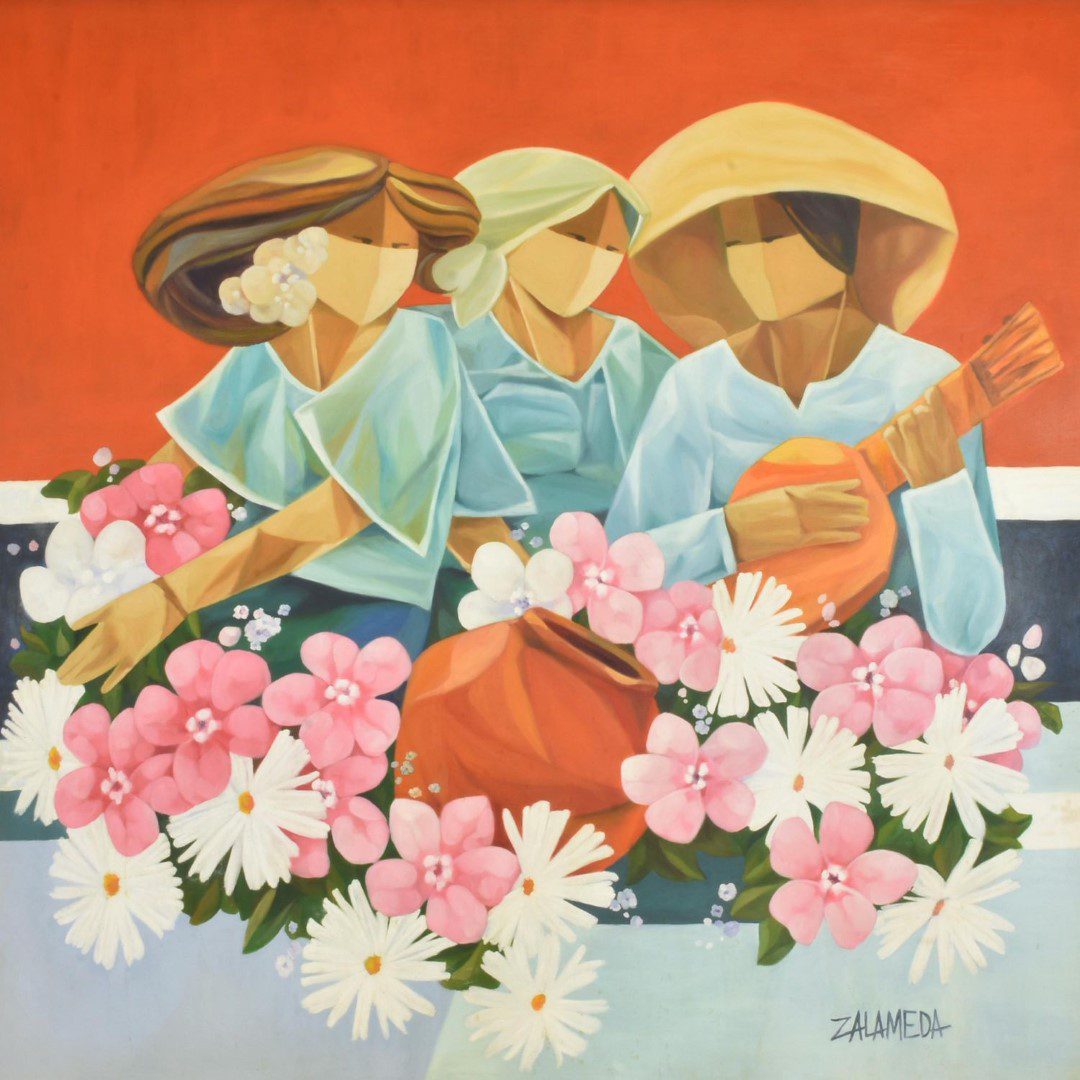“Harana” and letter writing used to be staples in Filipino courtship, and with Valentine’s Day just around the corner, why not bring them back?
Courtship in the digital age is set against a vast, interconnected world, but people are also craving a return to the older ways of life. From cafés that ban the use of digital devices to a group of teens in New York City who ditch their smartphones in exchange for hobbies, the “digital detox” — which involves going offline for extended periods — is a very real and relevant movement.
Besides wanting a change of scenery, people are beginning to understand (or perhaps they’ve known for a while now) that organic human connection—meeting someone in person, giving tangible tokens of affection, doing things together—is something that can’t be recreated through dating app profiles, hundreds of swipes, and the tapping of keyboards. In-person dating events in places like the United States, Spain, Singapore, the Philippines, and other parts of the world are becoming increasingly popular for this reason.

It shouldn’t be too hard to find love or establish a relationship the old-fashioned way—after all, our ancestors were doing it for hundreds of years. Courtship was a whole art form back then, a special period that took time, effort, and patience. There was no instant gratification to the promise of “forever,” but that’s what made it so precious. So whether you’ve been meaning to confess to a crush or woo your longtime partner, here are two particular rituals that are worth bringing back on Valentine’s Day (and beyond).
READ ALSO: Tranquil Writing: On Journaling And How It Can Enrich Your Life
Harana
The Filipinos are naturally musical people: singing is an extension of longheld oral traditions in pre-colonial Philippines. So it makes sense that music plays an integral role in the Filipino courtship ritual harana. The tradition was quite the group effort: a suitor would gather his friends and visit the home of the woman he’s courting, typically in the evenings when it’s cooler, as Daena Holbrook details in an article for Andrews University. He’d then serenade her with songs beneath her window, accompanied by the voices of his entourage.
Salcedo Auctions adds that while the terms harana and kundiman are used interchangeably, the two types of serenades have subtle differences. Harana can only be conveyed in Tagalog, while a kundiman has Spanish words thrown into the mix—a nod to the culture’s influence on this tradition.

The harana also had its own formula, as Hope Sabanpan-Yu details in the paper “Women and the Harana Practice in Cebuano Music”: “Three parts are evident: pagtawag (call out), pagtug-an or pagsugid (confession) and pagtubag (reply). In pagtawag, this is the stage where men are outside beneath the woman’s window announcing their presence. It comes with a specific set of songs. These songs usually place the men in the act of serenading from the outside, politely imploring the woman to open the window and listen to the song.”

Harana was such a prevalent part of everyday life and courtship that vestiges of it are immortalized in paintings by famous artists like Jose Joya, Carlos “Botong” Francisco, Oscar Zalameda, and Romeo Tabuena. While the practice of taking an entire group of people to your crush’s or partner’s house might seem a little over the top, it’s what makes the gesture memorable and, well, romantic to those who appreciate grand acts of love. But if that’s a little too much for you, why not book a private space or take your special someone on a nice picnic where you can serenade them solo-style (a little karaoke date might work well too).
Writing Letters
Writing letters isn’t exactly a Filipino courtship ritual—in the days before beepers and smartphones, this was a normal mode of communication. But Filipinos made it their own through the distinct poeticism of Tagalog and other Filipino dialects and languages. Everyone from national heroes like Jose Rizal and former presidents like Elpidio Quirino wrote scintillating love letters to the special people in their lives.
In 2020, Esquire released a piece on love letters uncovered by the Tiburcio-Jaralve family, between their grandfather Amado Tiburcio y Cruz and grandmother Remedios Mendiola y Cortez. “Once again, I hold my pen so that with this, I may once again express and beg on bended knees for a response to my most sacred desire,” Amado begins in one letter. “You know so well Remy that my heart has no other treasure except for one longing for your pure affection.” [Translated from its original Tagalog: Muli ko na naman hinawakan ang aking panitik upang sa pamamagitan nito ay minsan ko pang idaing at manik-luhod na hingin sa iyo ang katugunan ng aking pinipithayang banal na hangarin.]

No, you’re not reading the opening to a sweeping period romance; this was the kind of poeticism one would normally find in these earnest declarations. As writing by hand is a considerably slower process compared to typing, it gives the writer more time and space to really think about what they want to say. Sending letters was also a slow process before the introduction of postal services, as they were usually given to a recipient’s family member or a mediator of sorts—so every word needed to count.

Handwriting in itself is a thoughtful and immensely personal act. “The calligraphist Bernard Maisner argues that calligraphy, and handwriting more broadly, is ‘not meant to reproduce something over and over again. It’s meant to show the humanity, the responsiveness and variation within,’” writes Christine Rosen for The Guardian, and it’s true. It’s not the easiest way to send a message, but that’s not really the point in this age of digital convenience: the letter—written because you took the time to sit down, think about the special person in your life, and transfer your feelings onto the page—is the message.
Regardless of who you love or what the status of your relationship is, there’s a lot to take away from these older forms of courtship and communication. They not only connect us to our history and culture, but also help us experience more deeply human ways of loving and being loved.
Banner photo from the National Commision for Culture and the Arts website.





